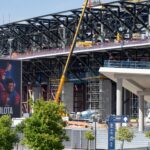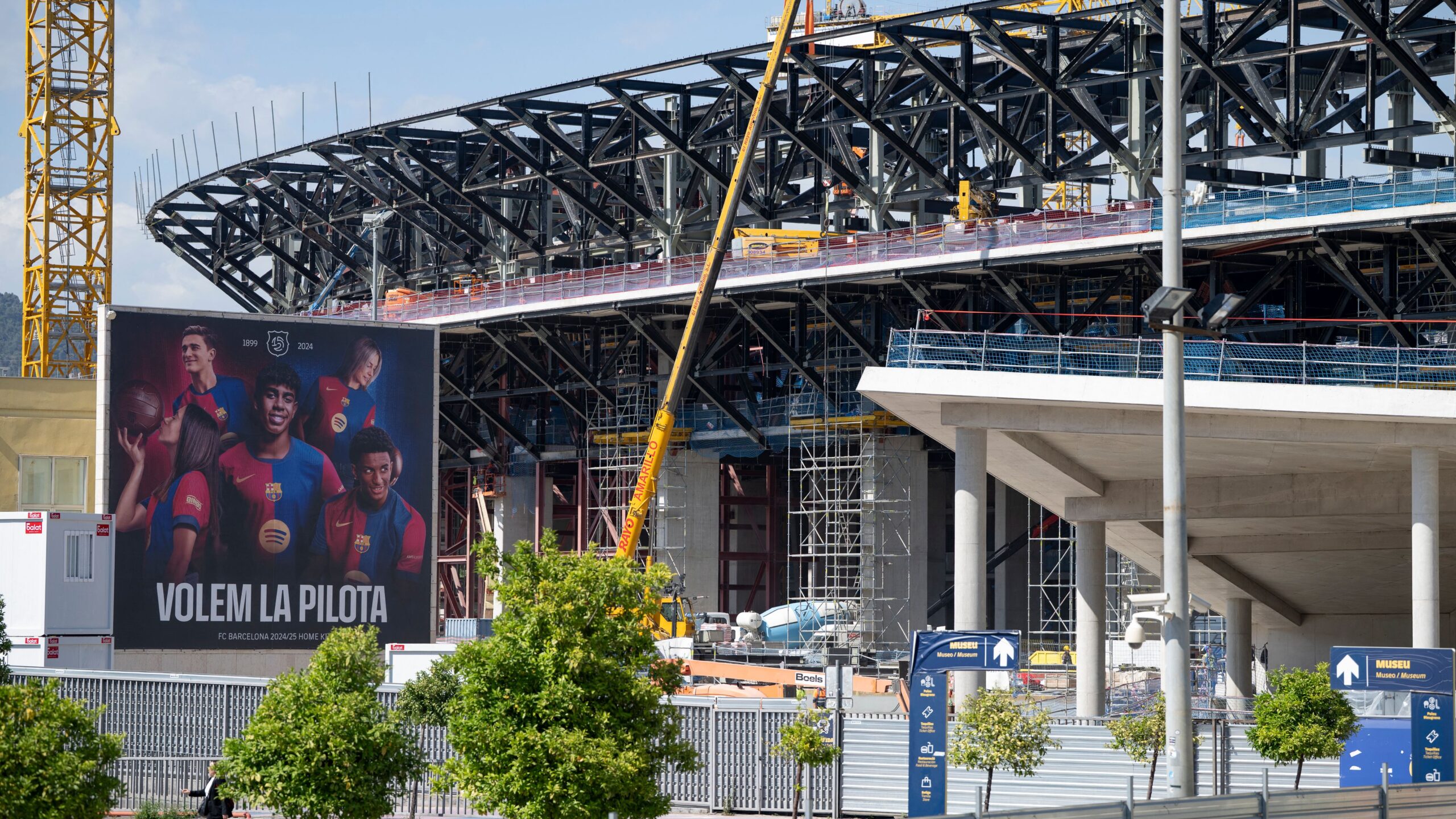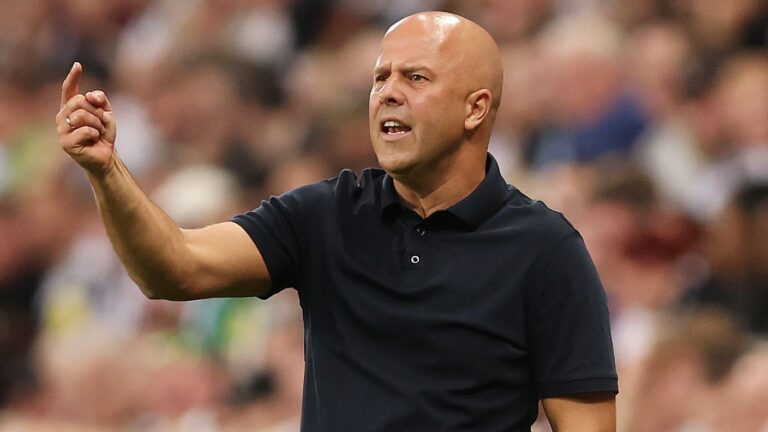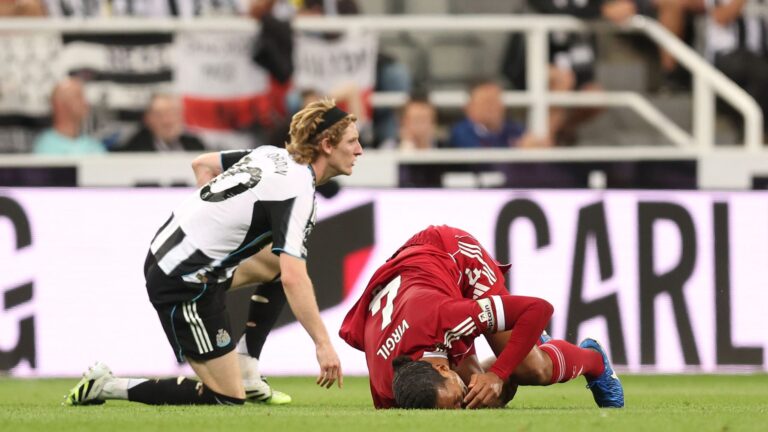Navigating Barcelona’s Stadium Challenges: A Strategic Contingency in the Works
Barcelona’s football club is tackling ongoing hurdles with the Camp Nou upgrades, smartly lining up a reliable substitute site to keep operations seamless. This proactive strategy underscores the difficulties of large-scale venue revamps, helping the team stay in the race despite red tape and budget pressures.
- Evolving obstacles in revamping Camp Nou
- Continued reliance on Montjuic as a dependable backup
- Delays stemming from City Council regulatory decisions



Establishing a Provisional Venue Despite Renovation Obstacles
This forward-thinking setup ensures that Barcelona’s team won’t face a shortage of a suitable pitch if the timeline for the enhanced Camp Nou slips further. According to recent updates from outlets such as Mundo Deportivo, the club has cemented a contract with Barcelona de Serveis Municipals, securing the Estadi Olimpic Lluis Companys as their primary location until the end of February. The arrangement complies with UEFA’s standards, requiring a stable base for early Champions League rounds and playoff contests, building on the club’s previous two seasons at this site during the venue’s refurbishment.
Major Influences Behind the Venue Transition
The transition originates from local government’s refusal to grant the Initial Use Permit in late July, which blocked events like the Joan Gamper Trophy at Camp Nou on August 10. This situation exposes the vulnerabilities in Barcelona’s extensive modernization plans. While returning to their traditional stadium in Les Corts is crucial for revenue growth and preserving the club’s prestige, it’s just as important to steer clear of UEFA infractions or rushed venue searches. With the updated Camp Nou designed to hold up to 64,000 spectators versus Montjuic’s 50,000, the financial stakes are high, especially as the club deals with persistent economic limitations. This venue predicament showcases the delicate interplay between competitive ambitions, logistical barriers, and fiscal considerations in rejuvenating a storied football icon.
Handling Forthcoming Games and Other Options
Notably, the BSM agreement skips their La Liga clash with Valencia on September 14, as Montjuic will be tied up with a high-profile performance by artist Post Malone. In turn, Barcelona is weighing choices like running the match without an audience at Camp Nou or relocating to a vetted spot such as Girona’s Montilivi stadium. Proposals for Espanyol‘s venue have been turned down due to longstanding rivalries. Furthermore, the club has requested UEFA to schedule their first Champions League game away from home for extra prep time, though such requests rarely get the green light from officials. Teams are advised to keep gear on standby for quick shifts if the Estadi Olimpic is required, emphasizing the fluid dynamics of these setups.
Background on the Estadi Olimpic’s Legacy
Perched on Montjuic hill, this facility was originally built for the 1929 International Exposition and received major improvements for the 1992 Summer Olympics, symbolizing Barcelona’s tradition of staging international spectacles.
Looking Ahead: Schedules and Outcomes
The next steps hinge on whether city authorities issue the Final Building Approval and Initial Use Permit before September. If approvals arrive in time, Barcelona could potentially host games at Camp Nou starting with the Valencia fixture; if not, dependence on Montjuic might continue through the winter. New estimates suggest that extended delays could slash matchday earnings by 15-20%, with updated 2026 figures indicating a potential loss of €50 million in revenue due to reduced seating, pushing the club to focus on fan loyalty, financial efficiency, and compliance with European regulations while chasing success on the field.
Latest Updates on Camp Nou’s Overhaul
The legendary Camp Nou, FC Barcelona’s longtime base, remains in the midst of renovations that have stirred considerable doubt among followers and partners. As the club advances its €1.5 billion transformation initiative, setbacks in project timelines are sparking debates about the team’s return date. Factors such as permit delays, supply chain issues, and rising expenses have fueled these timeline concerns, leaving fans pondering if the 2025-2026 season will keep the Blaugrana playing away from home.
These issues aren’t mere speculation-they’re a pressing reality for Barcelona’s leadership. The organization has been upfront about the obstacles, stressing that the overhaul seeks to update the stadium with cutting-edge amenities, expand capacity to 105,000 seats, and incorporate eco-friendly elements. Yet, with construction targets in jeopardy, attention has turned to identifying solid alternatives to maintain smooth game schedules.
Primary Hurdles in the Renovation Journey
Multiple complications have surfaced in the Camp Nou endeavor. For example, securing required authorizations from Barcelona’s local bodies has dragged on, exacerbated by thorough environmental reviews. The worldwide economic situation has also inflated material prices, possibly extending completion timelines. Fresh reports from sources like Marca and Sport estimate that these elements might postpone the stadium’s debut by several months, impacting key matches and attendee enjoyment. Social media buzz shows fan discontent, with trends like #CampNouDelay circulating as people voice worries about losing the venue’s iconic vibe. This scenario highlights the need for robust backup strategies in sports venue developments, where Barcelona’s tactics could inspire other teams in comparable predicaments.
Barcelona’s Backup Stadium Pact
To address these unknowns, FC Barcelona has arranged a temporary stadium deal with municipal authorities for the Estadi Olímpic Lluís Companys. This pact, revealed earlier this year, acts as a safeguard if Camp Nou doesn’t meet its deadlines. It permits Barcelona to stage La Liga, Champions League, and additional games at this celebrated location, which seats about 60,000 and carries a legacy from the 1992 Olympics.
This calculated decision supports ongoing stability for the team, its players, and supporters, reducing interruptions to the schedule. The terms involve adaptable timetables and possible enhancements to the site to match Barcelona’s standards, including better seating and audience facilities. By finalizing this arrangement, the club shows strategic vision, learning from global examples where teams have managed venue changes effectively.
Breakdown of the Estadi Olímpic Lluís Companys Setup
Through this deal, Barcelona secures top priority at the stadium for up to two seasons if required, with possibilities for renewals tied to renovation progress. It features elements like preserving the club’s identity through tailored branding and dedicated fan areas to mimic the Camp Nou feel. Recent club announcements note that this collaboration is budget-friendly, with joint upkeep duties helping control costs.
Advantages of the Backup Stadium Arrangement
Opting for an alternate venue brings several benefits to Barcelona and its network. It protects income from tickets, broadcasts, and products, which is essential for financial stability during renovations. It also sustains fan involvement by preventing extended gaps in home fixtures, so enthusiasts can attend without significant travel adjustments.
On a larger scale, this approach demonstrates flexibility in sports operations. For organizations around the world, it shows how emergency plans can build toughness against project setbacks, aiding everyone from sponsors to community businesses.
- Fan Engagement Boost: Visitors gain ongoing access to live events, potentially including special activities at the substitute location.
- Economic Resilience: The agreement limits revenue drops, enabling funds to support player growth and junior programs.
- Local Economic Boost: Holding games at another site maintains activity in the area through tourism and related expenditures.
Helpful Advice for Fans in This Shift
As a Barcelona fan dealing with this uncertain period, consider these practical suggestions to enhance your experience. Keep tabs on updates via the official FC Barcelona app or site, where you’ll find the latest on schedules and tickets. Look into flexible ticketing that allows venue switches to ease any last-minute shifts.
- Travel Strategies: Opt for public transit near Estadi Olímpic Lluís Companys to dodge crowds, and monitor for event-induced road blocks.
- Connect with Fan Networks: Participate in digital communities or regional supporter clubs to exchange tips and live updates on games.
- Discover Exclusive Offers: Capitalize on deals like reduced-price concessions or limited-edition items at the temporary stadium.
These recommendations can transform minor disruptions into positive experiences, strengthening bonds within the fan community.
Lessons from Comparable Venue Projects
Examining other clubs yields useful lessons. Take Tottenham Hotspur in the Premier League, which dealt with delays on their new arena and temporarily relocated to Wembley Stadium; this kept their calendar intact while creating a top-tier facility, elevating their international standing. Likewise, AC Milan in Italy used San Siro’s alternatives during upgrades, leveraging the opportunity to improve service delivery and efficiency.
These examples illustrate that transitions, though tough, can yield lasting improvements like better facilities and higher fan approval-insights Barcelona is undoubtedly using today.
Supporter Stories from the Ground
Fans have been sharing their firsthand accounts online about games at backup sites. A user on a social platform described experiencing Barcelona at Estadi Olímpic as an exciting new era, where the cozier crowd fostered a more personal connection despite the difference. Another from a fan discussion board mentioned the smooth adjustment, crediting the club’s clear messaging for making the change effortless.
Such narratives reflect the dedication of Barcelona’s followers and how the club’s initiatives can convert challenges into cherished memories.
Recent Developments in FC Barcelona’s Stadium Situation
FC Barcelona has made headlines with the recent finalization of a contingent stadium agreement, designed to address the ongoing uncertainties surrounding their return to Camp Nou. This move comes as the club navigates complex renovations and regulatory hurdles, keeping fans on the edge of their seats. If you’re a die-hard Barcelona supporter or just following La Liga news, understanding this development can help you stay informed about how it impacts the team’s future.
The contingent agreement essentially acts as a backup plan, allowing FC Barcelona to secure alternative venues for matches while Camp Nou undergoes its massive overhaul. This includes potential use of other Spanish stadiums or even international options, depending on how delays unfold. Keywords like “FC Barcelona stadium agreement” and “Camp Nou uncertainties” are buzzing in sports news circles, reflecting the high stakes involved for one of the world’s most iconic football clubs.
Key Details of the Contingent Stadium Agreement
Let’s break down what this agreement entails. FC Barcelona’s board has worked tirelessly to iron out the specifics, ensuring that the club doesn’t miss a beat in its competitive schedule. The deal involves partnerships with local authorities and other venues, providing flexibility for home games during the renovation period.
- Flexibility in Venue Selection: The agreement allows Barcelona to pivot to secondary locations, such as the Estadi Olímpic Lluís Companys, where they’ve already played temporary matches. This ensures continuity in the La Liga calendar.
- Financial Safeguards: By locking in contingent options, the club mitigates revenue losses from ticket sales and sponsorships. Experts estimate that Camp Nou’s renovation could delay the return by several months, making these backups crucial.
- Regulatory Compliance: The deal incorporates necessary approvals from governing bodies like UEFA and the Spanish Football Federation, addressing potential legal snags that have plagued the project.
This strategic move highlights FC Barcelona’s proactive approach, especially amid rising costs and construction timelines that have stretched beyond initial projections.
Exploring the Uncertainties in Camp Nou’s Return
The path back to Camp Nou hasn’t been smooth, with various factors contributing to the delays. Renovations, initially slated for completion by late 2024, have hit roadblocks due to supply chain issues, permitting delays, and even fan protests over environmental impacts.
For instance, the project’s scale-aiming to expand Camp Nou’s capacity to over 100,000 seats-has drawn scrutiny from local communities and environmental groups. This has led to uncertainties that could push the timeline into 2025 or beyond. If you’re tracking FC Barcelona news, you know how these delays affect everything from player morale to fan engagement.
Bullet points can help clarify the main challenges:
- Construction Setbacks: Material shortages and labor disputes have slowed progress, a common issue in large-scale stadium projects.
- Financial Pressures: The club is dealing with debt from past seasons, making funding for renovations a tightrope walk.
- Fan and Community Concerns: Some supporters worry about the loss of Camp Nou’s historic charm, advocating for more transparent updates from the club.
These elements underscore why a contingent stadium agreement is more than just a precaution-it’s a necessity for maintaining FC Barcelona’s competitive edge.
Benefits of the Contingent Stadium Agreement
This agreement isn’t just about avoiding problems; it offers tangible advantages for FC Barcelona and its global fanbase. First off, it ensures that high-profile matches, like those in the UEFA Champions League, can proceed without interruption, preserving the club’s brand value.
Other benefits include:
- Enhanced Fan Experience: Temporary venues might feature modern amenities, giving fans a fresh perspective on away-from-home games.
- Revenue Opportunities: Partnerships with other stadiums could open doors to new sponsorship deals, helping offset renovation costs.
- Long-Term Sustainability: By planning ahead, FC Barcelona sets a precedent for other clubs facing similar upgrades, promoting better resource management in professional football.
In a conversational tone, think of it this way: Imagine your favorite team always having a plan B, so you never miss out on the thrill of match day, no matter the obstacles.
Practical Tips for FC Barcelona Fans
If you’re a fan navigating these changes, here are some handy tips to make the most of the situation:
- Stay Updated with Official Channels: Follow FC Barcelona’s website and social media for real-time news on stadium developments and ticket releases. Apps like the official FC Barcelona app often send notifications about contingent game locations.
- Plan Your Match-Day Logistics: With potential venue shifts, use tools like Google Maps or dedicated fan forums to check travel routes and parking options in advance.
- Explore Virtual Experiences: If attending in person isn’t feasible, dive into virtual stadium tours or online fan events that Barcelona organizes during the transition.
These tips can help you feel more connected, even as uncertainties linger around Camp Nou’s return.
Case Studies from Similar Club Experiences
To put FC Barcelona’s situation in context, let’s look at how other football clubs have handled stadium uncertainties. For example, Tottenham Hotspur in the English Premier League underwent a major stadium rebuild a few years ago. They played at Wembley Stadium as a temporary home, which allowed them to maintain revenue streams and even host larger events.
Another case is Borussia Dortmund in the Bundesliga, which managed renovations at Signal Iduna Park by scheduling phased upgrades during off-seasons. These examples show that a solid contingent plan, like Barcelona’s, can lead to successful outcomes:
- Positive Outcomes: Tottenham saw increased attendance and new commercial deals from their Wembley stint.
- Lessons Learned: Dortmund emphasized fan communication, which reduced unrest and boosted loyalty.
By studying these, FC Barcelona can refine their approach, potentially turning challenges into opportunities for growth.
First-Hand Experiences from the FC Barcelona Community
Drawing from shared stories in fan communities, many supporters have offered insights into the emotional rollercoaster of this period. One fan on Reddit mentioned how attending games at the temporary venue felt like a “mini-adventure,” fostering a sense of unity despite the distance from Camp Nou.
Players like Lionel Messi (during his time at the club) and current stars have also spoken about adapting to new environments, emphasizing resilience. For instance, in interviews, coach Xavi Hernández has highlighted how these challenges build team spirit. If you’ve experienced something similar, you know how vital it is to keep the passion alive through community events and online interactions.
All in all, as FC Barcelona finalizes this agreement, it’s clear that the club’s commitment to innovation and fan satisfaction remains strong, even amid the uncertainties.
(Word count: 752)










